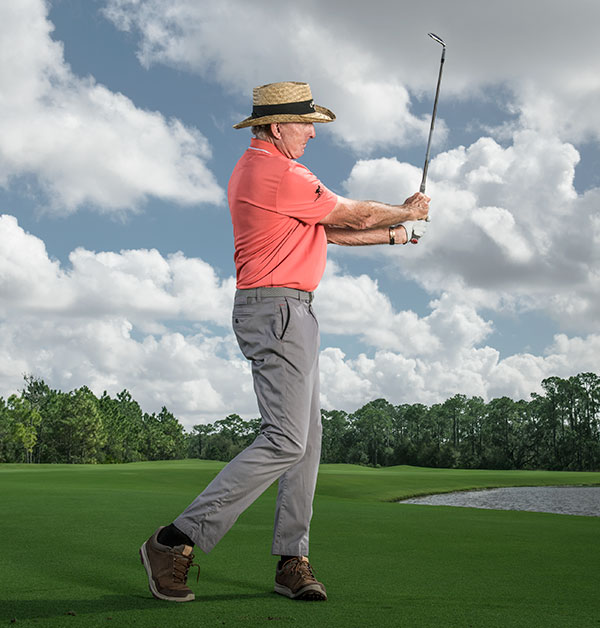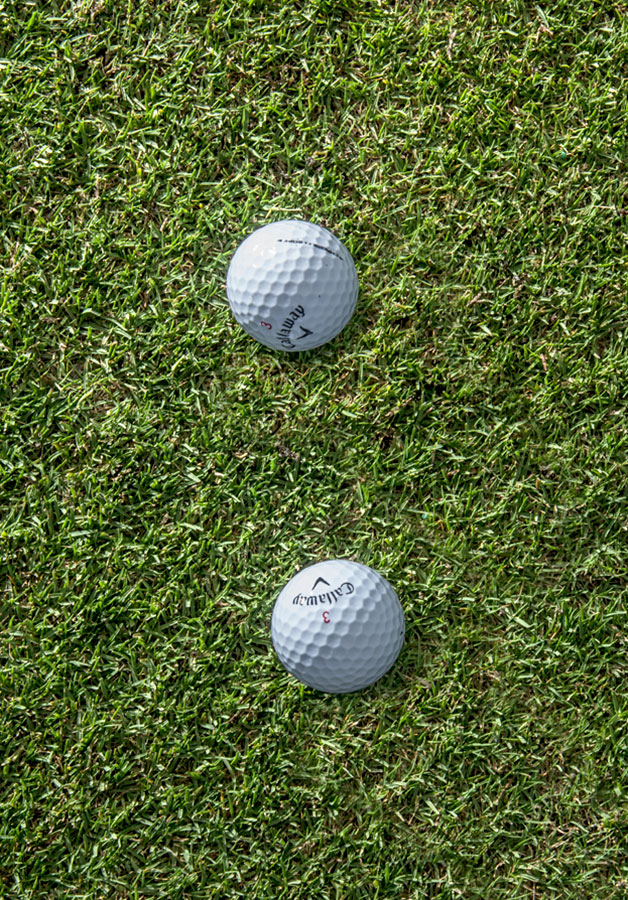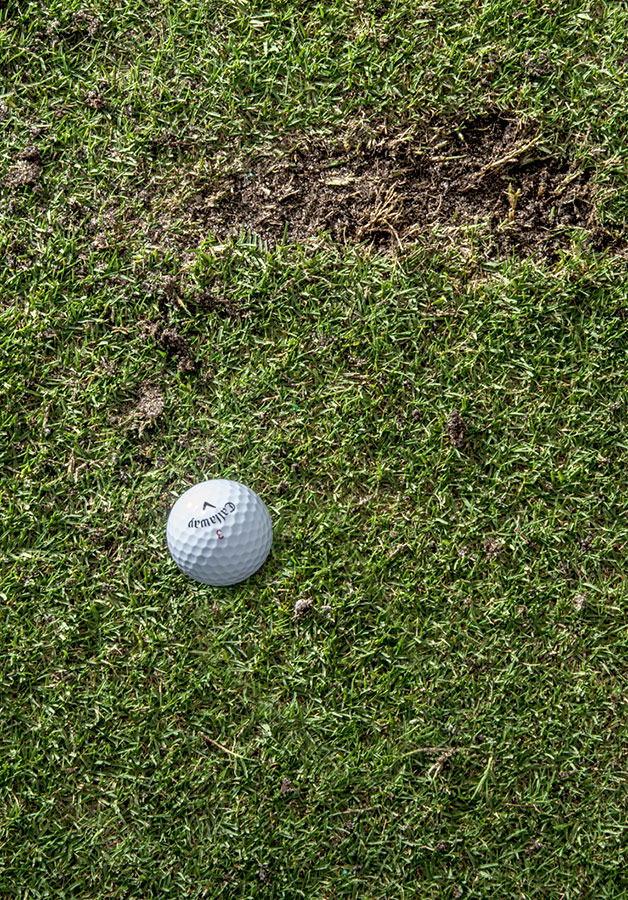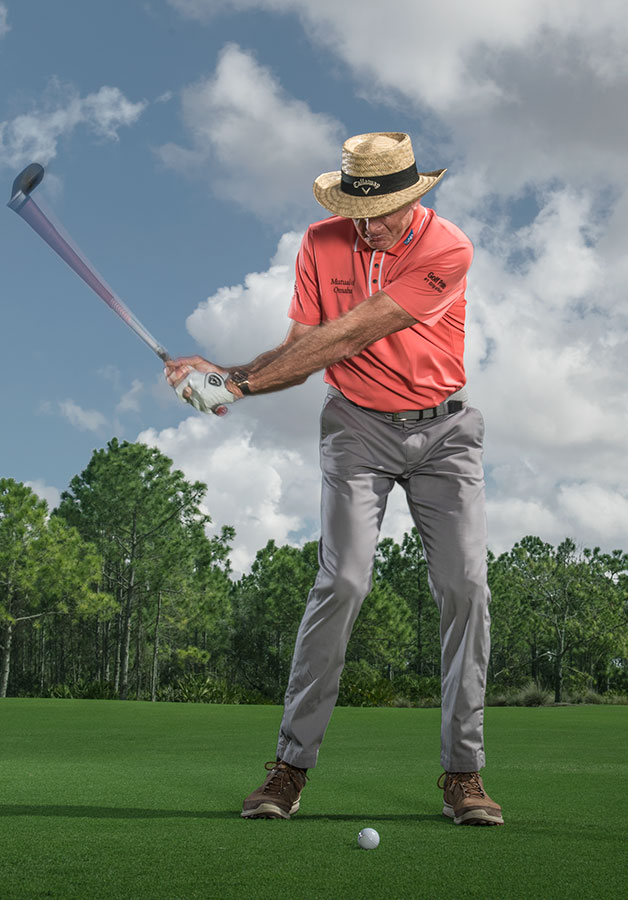History has shown that the greatest golfers were great iron players – Hogan, Nicklaus, Faldo and Woods are just some of the names that come to mind. Their ability to control trajectory and distance set them apart. When Ben Hogan complained to his wife that he was really struggling with his putting, she famously told him to hit his approach shots closer. It was funny, but true. Although it’s often an under emphasised part of the game, good iron play will really help you score, and good iron play is all about controlling distance – playing pin-high golf.
In this article, I will help you improve your iron accuracy with some drills and tips you can work on. Let’s start with a few that you can incorporate right now. First, narrow your stance to a little less than shoulder width. This will help you hit down on the ball – an important part of making crisp contact.
It also will get you to swing within yourself, which brings me to my next two tips:
- Take one club longer than normal;
- Swing with what feels like 80-percent effort.
The best iron players rarely go full-out, because it’s tougher to achieve centre-face contact that way. If that philosophy is good enough for them, it should be a no-brainer for you. The goal: make greens in regulation a regular thing.
Read on for more advice.
1. Trim Your Swing
We first have to get you in the habit of making solid contact virtually every time you hit an iron shot. That’s going to make your distance control a lot more reliable. An abbreviated swing, three-quarter length on both sides of the ball, will help do that. Jack Nicklaus almost never had a full follow-through with his middle-to-short irons, because a shorter swing makes it easier to hit it out of the centre of the clubface. It also gets you to drive through the ball, compressing it off the turf (more on that later).


Practise this body-controlled swing by hitting half shots [photos above]. Take the club back with good coil in your torso, but only to the point where your lead arm (left for righties) is parallel to the ground. Then stop your swing after impact when your trail arm is close to parallel to the ground. You might be pleasantly surprised to realise how good your ball-striking becomes despite making such a truncated swing.
2. Hit Down On It
The most common issue with poor iron play is trying to hit up on the ball. If it’s resting on a tee, a cushy fairway lie or even a range mat, you can get away with an iron swing that’s ascending as it strikes the ball, but you’ll never control distance or trajectory this way. You want to hit down on the ball, taking a divot only after impact.
A great drill to help you do that is to place a second ball next to the far side of the one you’re about to hit [below left]. After you hit the shot, note where your divot mark is in relation to the ball that’s still sitting there [below right]. It should be closer to the target. If the mark starts behind the ball, you’re still probably trying to scoop it off the turf. You’re not hitting down on the ball.


The typical reason is that you’re not shifting your weight to the front leg (left for righties) as you swing down. You should feel like all your weight is being supported by the left leg, and your chest is over the top of the ball. When I talk about compressing the ball, squeezing it off the turf, this is what I mean. You never want to try to get the ball airborne. The dynamics of this club-ball-then-turf interaction creates backspin, and that will get it up. Keep doing this divot drill until you routinely get that feel of compression.
 3. Rehearse The Move
3. Rehearse The Move
Assuming you worked on the half swing and divot drills, you’re now ready to try your new iron game on the course. For many of you, this will take you out of your comfort zone. Different lies, small greens, the pressure of the match – you might be tempted to go back to your old, scoopy, off-the-back-foot iron swing.
Instead of letting the situation get the best of you, let me offer a suggestion: don’t focus on what could go wrong. Block out distractions like that by thinking about what position your body needs to be in at impact to compress the ball. You can do that by rehearsing impact as you address the ball like I’m doing here [left]. Make sure the shaft is leaning forward, your weight is into your left side, and your chest is covering the ball. Then return to address and try to re-create that impact position when you swing.
I want to stress that your weight shift is only a slight lateral movement, not a sway. You might not exactly match that rehearsal of impact, but the closer you can come to it, the better your chance of a solid shot.
 4. Know Your Hybrids
4. Know Your Hybrids
I encourage you to add as many hybrids to your set as you can. There’s no reason to hit a 5-iron off a tight lie unless you’re trying to impress someone. It’s much easier to hit it high and solid with a hybrid. Just remember one thing: a hybrid is much more like an iron than a fairway wood. That means you want to play the ball roughly centre in your stance, just like an iron, and you want to hit down on it [below left], even taking a bit of a divot.
Because distance gaps with hybrids tend to be bigger than with irons, I also suggest you adopt two grips per hybrid – at the top of the handle and an inch or so down. This will give you two distances per club, so you can hit more approaches pin-high.
Let me leave you with one more overall thought about approach shots: be honest with yourself. You might have hit a 6-iron 170 yards – once – but you don’t do it regularly. So don’t take out the 6 when a 5-iron is the more reliable choice. Even if you catch one perfectly, and the ball flies over the pin, flushing it is going to feel pretty darn good.
David Leadbetter spoke with Ron Kaspriske



